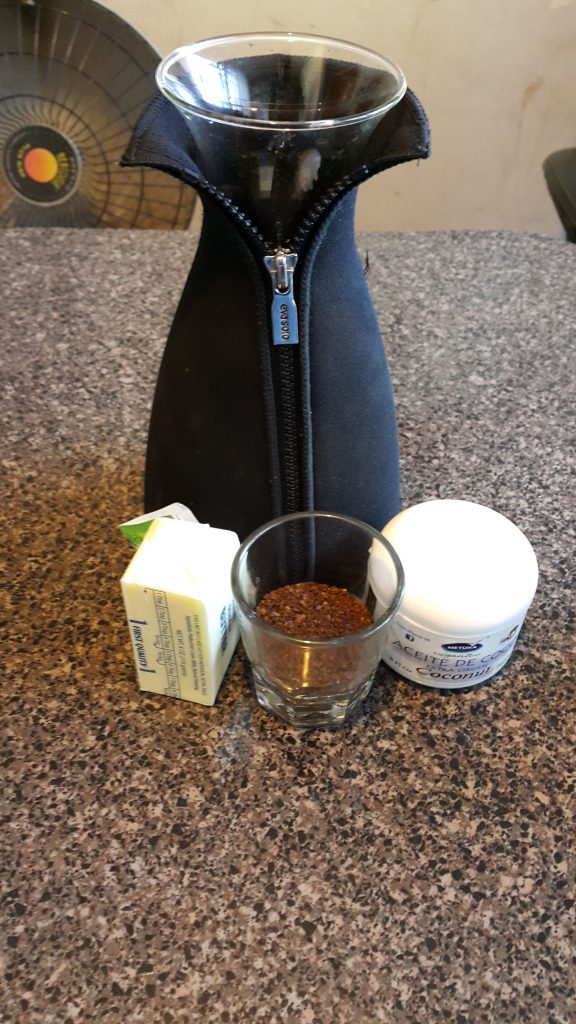
It began to report food allergies in Europe in the early twentieth century, and since the 1940s, food allergies have been recognized by doctors worldwide.
Up to two million, or 8% of children in the US They are estimated to be affected by food allergies, and up to 2% of adults.
In the case of a true food allergy, the immune system of a person will react to a usually safe food. This is caused by an allergic antibody called IgE (Immunoglobulin E), which is found in people with allergies. The food allergy often occurs in people who have relatives with allergies, and symptoms after that allergic individual consumes even a small amount of food can occur.
The food intolerance is sometimes confused with allergy. The food intolerance refers to an abnormal response to a food or food additive that is not an allergic reaction. It differs from an allergy in that it does not involve the immune system. For example, a person may have uncomfortable abdominal symptoms after consuming milk. This reaction is probably caused by an intolerance to milk sugar (
lactose), in which a person lacks the enzymes to break down milk sugar for proper digestion. Your allergist can help you determine the difference between intolerance and allergy.
The food allergens (ie, those parts of foods that cause allergic reactions), are usually proteins. Most allergens can still cause reactions even after being cooked or digested. Numerous proteins have been studied to establish food allergen content. The most common food allergens, responsible for up to 90% of all allergic reactions are the proteins in cow's milk, eggs, peanuts, wheat, soy, fish, shellfish and tree nuts . All foods come from a plant or animal, and are grouped in families depending on their origin. Peanuts, black-eyed peas, kidney beans and lima beans and soybeans are some members of the legume family. Asparagus, onions, garlic and onion are, surprisingly, members of the lily family. A person allergic to one member of a food family may be allergic to all members of the same group. This is known as cross-reactivity, some allergic to peanuts and nuts, which are from different food families; these allergies are called coincidental allergies, because they are interrelated.
Within animal groups of foods, cross-reactivity is not as common. People allergic to cow's milk can usually eat beef, and patients allergic to eggs can usually eat chicken. People allergic to eggs often react only to proteins in the egg white. However, since it is impossible to completely avoid cross contamination between yolk and white, should avoid eggs completely.
Symptoms of allergic reactions to foodThe most common allergic skin reaction to a food is hives.
Hives are swollen red areas of the skin very itchy and can appear suddenly and disappear quickly.
They often appear in clusters, with new clusters appearing as other areas. Hives may occur alone or with other symptoms. Atopic dermatitis or eczema, a skin condition characterized by itchy, scaly and red, can be triggered by food allergy. This reaction is often chronic, manifesting in people with allergies or asthma family or personal history. The symptoms of asthma, a chronic disease characterized by narrowing of the airways and difficulty breathing, can be triggered by food allergy, especially for children and babies. Gastrointestinal symptoms of food allergy include vomiting, diarrhea and stomach cramps and sometimes a red rash around themouth, itching and swelling around the mouth and throat, nausea, stomach pain, bloating and gas.
It is common in babies have temporary no allergic reactions to certain foods, especially fruits, cow's milk, egg, peanuts and wheat or
allergic to potato. Symptoms may include irritation around the mouth, due to natural acids in foods like tomatoes and oranges, or diarrhea due to excess sugar in fruit juice or other beverages. However, other reactions may be allergic and may be caused by small amounts of the offending food when you eat again. As they grow older, some children may tolerate foods that previously caused allergic reactions, with the exception of allergies to peanuts and tree nuts. An allergist should conduct periodic reviews of these allergy testing with the right foods.
Severe allergic reactionsIn severe cases, consuming a food to which one is allergic can cause a life-threatening reaction called anaphylaxis. This is a systemic allergic reaction that can sometimes be fatal. The first signs of anaphylaxis may be a feeling of warmth, flushing, tingling in the tongue or itchy red ON irritation. Other symptoms may include feelings of dizziness, shortness of breath, severe sneezing, anxiety, stomach or uterine cramps and vomiting and diarrhea. In severe cases, patients may experience a drop in blood pressure that causes loss of consciousness and shock. Without immediate treatment, anaphylaxis can cause death.
Symptoms of anaphylaxis are reversed by treatment with injectable epinephrine, antihistamines and other emergency measures. It is essential that anyone with symptoms suggesting possible
anaphylaxis get emergency treatment immediately.
And food intolerance reactions to additivesThe food intolerance reactions are usually caused by dietary factors and not by allergenic proteins in food. As already mentioned, one of the most common intolerances is lactose. They can be triggered other reactions to food intolerance with drug-like chemicals in some foods. Symptoms may include nervousness after consuming chemical additives in cheese and chocolates, or various adverse reactions to chemicals and preservatives to food, called food additives are added. Among the most common food additives that may cause reactions in sensitive individuals include aspartame, benzoates, BHA and BHT, FD & C Yellow No. 5 and Red No. 3, MSG, nitrates and nitrites, parabens and sulfites. True allergic reactions to food additives are rare.
The best way to manage sensitivity to food additives is to learn which foods contain certain additives and avoid those that cause problems are. Your allergist can help you identify foods for you to delete everything possible from your diet.
DiagnosisAn allergist is best qualified to diagnose food allergies. Diagnosis requires a carefully organized and detailed assessment. First, the specialist will establish a complete medical history, and then perform a physical exam. The specialist will find out the frequency, time, gravity and nature of the symptoms, and the amount of time between eating a food and any reaction.
Dermal allergy testing may be useful to determine which foods, if any, trigger allergic symptoms. In skin testing, a small amount of liquid extract made from food in the back of the arm is positioned. In a test called prick test, a needle is passed through the liquid in the top layer of skin. During the scratch test, small scratches through the liquid and the top layer of the skin are made. If the patient develops a rash or hives small, within 20 minutes, this positive response indicates a possible allergy. If the patient develops a wheal, the test is negative. It is rare for someone with a negative skin test to have any food allergy IgE. Dermal tests are not helpful when sensitivity is suspected to simple foods like sugars or chemical food additives.
In certain cases, such as severe eczema on the whole body, an allergic examination can not be performed. Your doctor may also use blood tests, called RAST testing or CAP-RAST, to diagnose food allergies. For diagnosing allergies to milk, egg, peanut or fish may be more useful than the CAP-RAST test dermal tests. However, false positive results may occur with both skin testing and blood tests with food allergies. Food testing, described below, are often required to confirm diagnosis.
The allergist may also suggest that the patient keep a food diary, which consists of a detailed record listing foods eaten, date, time and any symptoms occur after eating. When you suspect an allergy to a single food, the specialist may recommend removing any food for a while. If symptoms are relieved, the specialist can add food to the diet once again to determine if it causes a reaction (but never done this if the patient has a history of anaphylaxis).
If there is any doubt about the diagnosis of food allergy, the allergist may recommend a test food or food additive "blind". These tests are performed in the physician's office or sometimes in hospital under close observation.
Generally, the suspect food or health food, called placebo, colorless patient in capsules, or in a mixture or pudding not administered allergen. Neither the patient nor the doctor knows if the suspect food or placebo is consumed. This test is called "double blind." When done correctly, these tests are very reliable to specifically establish a cause and effect relationship between a food and allergic symptoms.
Treatment Avoid food. The best way to treat food allergy is to avoid specific foods that trigger allergies.
Ask about the ingredients. To avoid eating a "hidden" allergen meals away from home, people with allergies should inquire about ingredients when eating at restaurants or other houses. Read food labels.
It is important to read food labels carefully and become familiar with technical or scientific names of foods. For example, milk may not appear as an ingredient in a label; but the label may indicate the presence of casein (milk protein), sodium caseinate or milk solids. Sometimes it appears as wheat gluten; similarly, the egg often appears as albumin. Government agencies have been working to improve the labeling of food ingredients for consumers allergic to certain foods can more easily determine which foods may need to avoid.
Be prepared for emergencies. Anaphylactic reactions caused by food allergies can be potentially life threatening. People who have experienced anaphylaxis should strictly avoid the food that triggered the reaction. Those with severe food allergies may need to carry and know how to use injectable epinephrine and antihistamines to treat reactions due to accidental ingestion. They should also wear an ID bracelet that describes the allergy. If you have an anaphylactic reaction after eating some food, it is essential to have someone drive you to the nearest emergency room, even when symptoms improve. For the correct diagnosis and treatment, be sure to get follow-up care of an allergist.


















